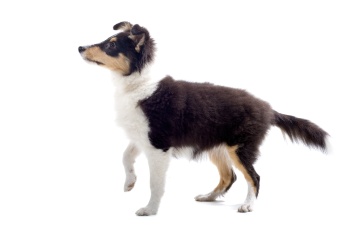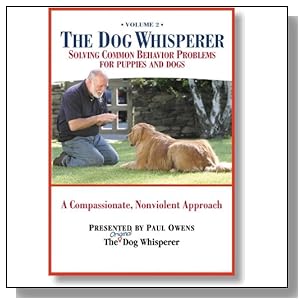Bad Dog Behaviour Digging
Digging is common dog behavior. It becomes a problem when your backyard starts looking more like a section of the moon then a regular backyard.
Dogs dig out of boredom or curiosity. They also do it to bury various items such as bones.
Because digging comes natural to dogs there are things we need to do to curb the behavior or minimize the impact of the digging.
A good way to stop a dog from going back to dig the same hole is simply to fill it in. You can use leaves, rocks or sand to fill it in. Often the dog will lose interest in the area if the original hole is filled in.
You could also have a designated digging area in your yard that the dog is allowed to freely dig in without retribution.
This could be a sandbox or simply a patch of dirt in a corner of the yard.
You can bury treats in this area to encourage digging here and nowhere else. Once the dog realizes he will get a treat if he digs here but not over there, it should become a popular spot.
Dogs love fresh dirt so make sure their designated area is regularly topped up with fresh soil.
If you are planting anywhere else in the yard with fresh soil then fence it off for the time being.
With time and patience, any dog can be trained, so make sure you start early.
Visit the main page here to learn more about dog obedience tips and then come see our tips here for how to train your dog not to bark and other bad habits.
Here are a couple of the most popular training resources at the moment that you can buy online and have home delivered:
Training Your Dog - Can You Teach an Old Dog New Tricks?
There are more or less favorable ages for training a dog. Very young puppies are preoccupied with discovering their environment, but they are never too young to learn the basics.
In general, puppies under 6 months will benefit greatly from their experiences with their brothers, sisters, and mother.
This is when they learn the elementary "social graces".
While they are learning from their siblings, you can take this time to teach the most basic element of training, trust.
They are too young to concentrate on formal lessons, but they can acquire an understanding of your expressions of pleasure and displeasure through sights and sounds as you grow closer together.
This is more of a time to bond, but they are always learning, and you can help the process along.
Most training schools and classes will not accept canine students less than 6 months of age, due to the teething process, another distraction.
Also during adolescence, dogs, like children, tend to resist authority.
Again while formal training may not be possible, you can still work with your dog and help him get through this difficult time.
Generally speaking, you can start to give a dog formal training with the best chances of success between the ages of 12 and 18 months.
Small breeds and females, who mature earlier, can start sooner than large male dogs.
Working dogs, such as guard or guide dogs are never trained before the age of 1 or 1 ½ years, while hunting dogs are taken out with well-trained older dogs when they are 4 or 5 months old.
There is no maximum age for starting to train a dog. You can teach an old dog new tricks as long as he lives. One of the best obedience competitors in history was a Dalmatian who started training at the age of twelve.
The principle handicaps in training unschooled adult dogs are the need for unlearning bad habits, and the greater length of time it usually takes to establish the basic learning process in his undisciplined brain.
Visit the main page here to learn more about dog obedience tips
How did you like this dog obedience tips post? If you found this article helpful to you, you may want to share it with others by clicking the social networking buttons on the left side of this page – Thank You!
Join in and write your own page! It's easy to do. How? Simply click here to return to Pets.

"Power Tips" magazine is back!
You Get A Free Complete Self Help Report delivered to your email box every edition, plus you get a free PLR article and other great gifts!
SUBSCRIBE BELOW ... I promise you will want to USE what you learn!
I really want to know what you think of this site, this page, and to hear your tips or suggestions about it.
So please share your story or simply add a Comment in the comment box.
If you feel that the information on this page has been useful to you please give it a Like or share it with your friends - thanks!!
"You are a life Saver!!
I recently discovered this site and I can tell you that my life has not been the same. I now come here EVERYDAY and spend at least 1 hour.
I used to spend that time browsing online fashion and beauty
magazine which just means that I spend more. Now I have replaced that
habit with coming here.
In future I will think about contributing articles as well. Thank you! Thank you!! Thank you!!! and God bless"
Contact Us | About Us | Terms of Use | Privacy Policy | FAQ | Testimonials
Amazon and the Amazon logo are trademarks of Amazon.com, Inc. or its affiliates. As an Amazon Associate I earn from qualifying purchases. Product prices and availability are accurate as of the date/time
indicated and are subject to change. Any price and availability
information displayed on [relevant Amazon Site(s), as applicable] at the
time of purchase will apply to the purchase of this product.












